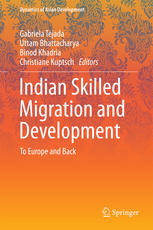

Most ebook files are in PDF format, so you can easily read them using various software such as Foxit Reader or directly on the Google Chrome browser.
Some ebook files are released by publishers in other formats such as .awz, .mobi, .epub, .fb2, etc. You may need to install specific software to read these formats on mobile/PC, such as Calibre.
Please read the tutorial at this link: https://ebookbell.com/faq
We offer FREE conversion to the popular formats you request; however, this may take some time. Therefore, right after payment, please email us, and we will try to provide the service as quickly as possible.
For some exceptional file formats or broken links (if any), please refrain from opening any disputes. Instead, email us first, and we will try to assist within a maximum of 6 hours.
EbookBell Team

4.4
52 reviewsThis edited contribution explores strategies and measures for leveraging the potential of skilled diasporas and for advancing knowledge-based evidence on return skilled migration and its impact on development. By taking the example of Indian skilled migration, this study identifies ways of involving returned skilled migrants in home country development as well as proposes approaches to engage the diaspora in development. As high-skill immigration from India to mainland Europe is a rather recent phenomenon, the activities of Indian professionals in Europe are under-researched. The findings have wider application in contributing to the policy dialogue on migration and development, specifically to the advantage for developing and emerging economies. The book employs an interdisciplinary, two-fold approach: The first part of the research looks at how international exposure affects the current situation of skilled returnees in India. The second, European, part of the research examines migration policies, labour market regulations and other institutional settings that enable or hinder skilled Indians’ links with the country of origin. Structural differences between the host countries may facilitate different levels of learning opportunities; thus, this book identifies good practices to promote the involvement of Indian skilled diaspora in socio-economic development. In applying the framework of diaspora contributions as well as the return channel to study the impact on India, the book draws on qualitative and quantitative research methods consisting of policy analysis, in-depth interviews with key experts and skilled migrants and on data sets collected specifically for this study.